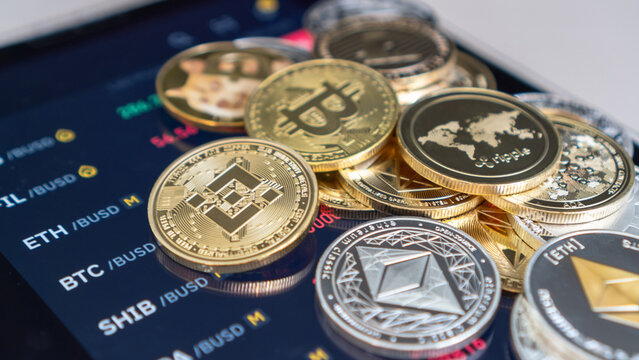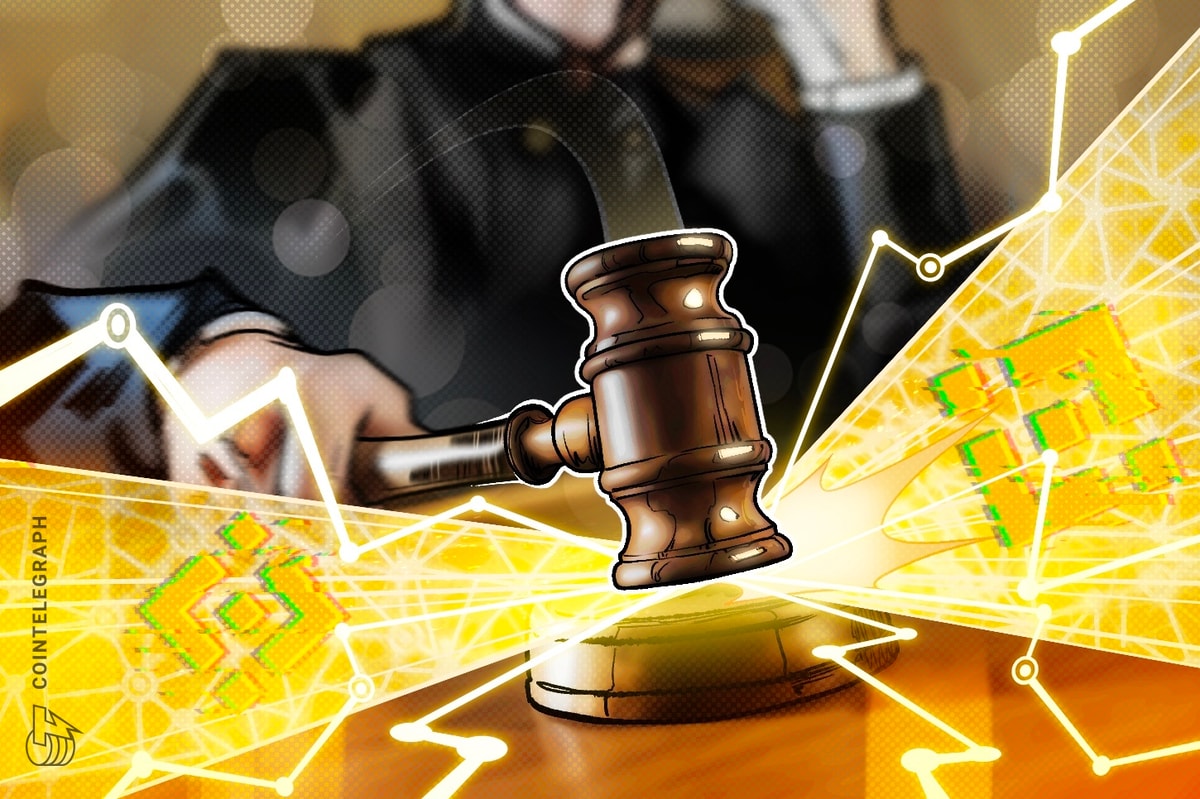
A Trip to the Embassy
The Entrance to Bitcoin Embassy. Subtle, and unimposing.
There is a large, imposing steel door along a popular street, in the bustling downtown business hub of Buenos Aires. There are no visible markings, or signs, that would indicate to passers-by what is housed inside. And given the time of day, it may take a few buzzes before anyone answers the door. But when someone does get around to letting you in, you’ll quickly find yourself in the nascent epicenter of Buenos Aires’ burgeoning Bitcoin industry.
Once inside, one will find an environment that is frenetic but welcoming. After a brief introduction to some of the building’s chief organizers, along with a tour of the facility, I was a fellow citizen in good standing, in the world of Bitcoin. Introductions aside, I was left alone with my laptop and an Internet connection, and any contribution to the brave new decentralized world was mine to create. This atmosphere seems to be working.
Judging by the piles of construction debris and unfinished cabling strewn on the floor, one wouldn’t be inclined to believe that this is an active work center. The smell of drying paint permeates the halls, and the occasional moments of silence are quickly disturbed by the jarring thunks of carpenters at work. But if you poke past the construction crew, and peer into the rooms lining the hallways, you will find the who’s who of the burgeoning Buenos Aires Bitcoin scene furrowing an eyebrow, and furiously typing on laptops at their desks.
After climbing the entrance stairs, the first floor greets me with a large, almost-finished reception desk and a poster that reads “The people’s currency.” To my right is a small, 40 person auditorium, decorated with posters sporting similarly patriotic memes. Bitpay is on the first floor, though they’ve only barely moved in. Alberto Vega is the regional manager, and an active participant in the construction of the embassy. Though not one to shirk a guest, introductions are kept short. Alberto is busy man who’s typically in a meeting, or on his way to a meeting that’s about to start. BitPay’s business model in Latin America is very similar to the North American model, but their value proposition is more focused on the response time in which their customers are reimbursed in fiat, whereas in the North America their offerings are typically justified by the low fees that are levied. The time at which a vendor is reimbursed for payment via traditional credit card contracts here in Latin America is typically thirty days. However, when inflation climbs to rates as high as 10% in a thirty-day term such ‘confirmation times’ can cause a vendor to lose their entire profit margin by the time fiat payments are deposited into their bank. With BitPay, a vendor can choose to keep their money in Bitcoin to hedge against fiat-volatility, as well as to receive fiat within one business day of the time of purchase. Seemingly, this cash-flow advantage is a particularly attractive selling point in Argentina, and Alberto is quick to pitch it.
After climbing a second set of stairs, on the second floor I found the smaller, but more densely packed offices of BitPagos. BitPagos’ business model is a bit different than Bitpay in that their target customer is typically smaller businesses, for which Bitpagos will process credit card payments, and compensate the business in Bitcoin. This model is in many ways the opposite of what’s being supplied by BitPay. By processing payments in the United States, and compensating in Bitcoin, BitPagos can circumvent many of the onerous taxes and restrictions imposed by the incumbent credit card processors in Latin America. Judging by what I see on the streets, this seems to be a popular service. Coinmelon and ZipZap are also located on the second floor, though their offices haven’t been fully moved in yet. Also on this floor are a few small stealth-mode startups hacking away in their offices. And not far from them, are the beginnings of a hostel-like room with bunkbeds and a shower. The intent of the dorm room is to house the hackers and dignitaries from the international community during their travels. Just like any other embassy, I would suppose.
On the roof is a very large patio, with a wonderful view of the skyline. The Bitcoin embassy is dwarfed in its size by the financial service and IT consulting neighbors on either side, but the location does afford a wonderful view of the bustling city below. There’s a large and imposing IBM building to the east, and there’s typically a smoking construction worker hanging out and enjoying his break on the corner of the roof just in front of it. The roof will eventually host open-aired parties and events, along with a large barbeque area with which to feed its attendees.
Wandering the halls one day, I bumped into James. James is an American, a student from Tufts University, and he has been hanging around the center since construction renovations started. He’s studying international business, and practicing his Spanish language skills. Walking around the city with James, it’s fresh to see an American’s take on the nuances of culture and attitudes towards money here in Argentina. The relationship that Argentinians have with their currency is significantly more nuanced and complex than most any group of citizens in the world.
The Liberty, it begins with you!
The Peso
Argentina is a free capitalist democracy, with many freedoms that their government is proud to showcase on its state-sponsored television. But seemingly, out of a growing desperation over its dwindling foreign exchange reserves, official policy over the the money supply have become increasingly onerous. Principally, Argentina has a single, official exchange rate that is used to determine the conversion rate of the local pesos to dollars.This rate is mandated by law for use with all banking, credit card, and official exchange purposes. Unfortunately for Argentinians, this official rate of roughly 8 pesos to the dollar is about 33% lower than the ‘actual’ free-market exchange rates that the rest of the world uses. There are many unofficial rates that are more accurately portraying the market’s view of the worth of the peso, but of the many competing rates, the “Blue” rate is the most ubiquitous. In fact, the “Blue” rate is so ubiquitous that it is featured prominently, each day, in the nation’s newspapers directly alongside the official rate. The spread between the official rate and the blue rate works to the advantage of the country’s treasury; it effectively acts as a tax on imports and exports, wherein the spread between the official rate and the blue rate is added to the country’s foreign exchange holdings. Adding dollars to the country’s reserves both provides the government with the ability to pay its debts in the dollars in which they must be repaid, but additionally, holding foreign currencies in its reserves is done in an attempt to prevent inflation from rising further. Whether it actually achieves this latter goal, is highly debatable.
The front door of this bar displays it’s accepted payment mechanisms. Bitcoin is proudly denoted next to it’s legacy counterparts.
The Peso as a Payment Mechanism
While walking the streets of Buenos Aires, and conducting transactions with merchants, you’ll notice that there’s more strangeness at work in the economy of Argentina than just exchange rates. Like other countries, vendors in Buenos Aires proudly advertise a long list of accepted payment mechanisms. These mechanisms include the standard Amex, Visa, and Mastercard logos we’re familiar with, and also list a number of competing mechanisms that Americans would not be familiar with (Visa Electron, Maestro, and Argencard being just a few). Unfortunately for patrons, these indicators are largely just a decoration. During the increasing times of uncertainty, merchants typically won’t accept anything but cash-money pesos. Similar to the US, when accepting credit cards, a merchant doesn’t receive their payments until thirty days have passed. While that’s an acceptable wait time in stable economies, for a currency which is inflating at a rate as high as 10% in a single month, this 30-day wait time on funds can destroy the merchant’s profits outright. As such, merchants are quick to declare that their credit card machine “isn’t working” during these periods of excessive devaluation, in an attempt to preserve their wealth.
Though cash money solves much of the cash-flow problems a vendor encounters on a daily basis, it comes with another set of problems. A visitor to Buenos Aires will quickly note that the money itself is of a notable sub-standard quality when compared to Euros and US Dollars. The largest denomination bill that’s printed by the treasury is worth about $8 US, and the smallest bill is worth about 15 cents. Because the denominations of the currency are so small, bills frequently change hands and deteriorate in their construction. Two-peso bills are often ripped and taped, and 100 pesos bills are very typically faded from so much use. The lack of quality in the currency allows for counterfeiters to more easily slip their bills into the market, and counterfeit 100-peso notes are very common. Even banks stumble on detecting counterfeits, and it’s not uncommon to receive a bogus note from an ATM or teller. Coins are rarely used, and typically all transactions are rounded to the nearest one or two pesos. Seemingly, the lack of coins is an attempt to reduce seigniorage costs on the part of the treasury. While the casual observer would suggest that “printing larger denominations” would solve these problems, the treasury is unwilling to do so, as that decision would be a tacit admission of the rise of inflation.
All of these policies, combined with years of mismanagement of fiscal resources, have eroded the public’s trust in the Argentinian currency, and citizens are reluctant to hold pesos for very long, let alone maintain a peso-based savings account of any kind. These problems further beget trust issues, and the peso’s cycle of inflation seems intent on continuing onward without an end in sight. In fact, prices in Buenos Aires change so often that it’s common to see printed menus featuring a blank space where the price should be. In this space will be a penciled-in notation of the current cost of the item, often with a dull coloration behind it caused by the erasings of multiple adjustments from the prior year.
In years prior, citizens were allowed to purchase dollars and Euros, at the official rate, in limited quantities. Typically these purchases were made under the auspices of a need to travel internationally, though in practice these purchases were made by citizens who had no other reasonable path to save their earnings. Though this program is supposedly still in existence, it appears to be largely a figurative gesture of equity by the central bank, as no-one seems to be able to qualify and actually use this program. Instead, as would be expected to arise in an underserved market sector, is a highly organized, albeit completely illegal, shadow banking industry.
Unstable prices require that many merchants denote the price of their goods in pencil.
The Peso as a store of value
There are two economies fighting in Buenos Aires: the black market economy and the official economy. Their territories are well established, and on the line between them, is Florida street. Driven by the blue dollar exchange rate, and the need to service a store-of-value for its users, a shadow banking industry has arisen around the fair-market denomination of the peso. All over Argentina, nearly everyone has at least some relationship with this black market economy. Principally, this market exists to facilitate currency exchange functions, though speculations abound as to the other customers and services of this system. US Dollars are the primary currency in this market, and they are most typically fed into this economy by international travellers. Upon arriving in Argentina, it’s made very obvious to tourists that the official exchange rate is not to be settled for. And, tourists are quickly funneled into “Florida Street”, which has plenty of obvious exchangers looking to make you a better deal than what you’d find at a brick and mortar exchange. These exchangers, affectionately called ‘arbuelitos’ (little trees) by the locals, are on every corner on Florida street and are shouting “Cambio!” into the air every minute or so, announcing their availability to onlookers. Once a tourist flags this person down, exchange terms are quickly negotiated, and the tourist is presented pesos in exchange for their greenbacks at a near-blue-dollar rate. These transactions are entirely illegal, and while police constantly patrol these areas and clearly witness these exchanges transpire, no action is taken on either the exchangers or the participants. The arbuelitos typically carry very little money on themselves, and between transactions, report and store their reserves at nearby ‘banks’ which operate clandestinely out of small un-advertised apartments or offices. These regional, black-market banks are called ‘cuervos’ (caves), and are the lifeblood of the black market banking system. The cuervos typically take the dollars earned from tourists, and sell them to local citizens who are in need of dollars as a store-of-value for their earned income. Argentinians will typically form relationships with specific cuervo operators, and make regular purchases of foreign currency as part of their relationship with the cuervo bank. This currency is typically hidden away at the Argentinian’s home, where the money will stay for as long as the holder can afford to keep it. The cycle is constant, and a mainstream, if not absurd, part of living in Argentina.
Enthusiasm, though still comparatively small, is growing. This Argentinian is learning to use a BTM at a local meetup
Enter Bitcoin
Standing against all of these improbable institutions, and working tirelessly on the third floor of the Bitcoin embassy, you will find the very ambitious Diego Gutierrez-Zaldivar. If Bitcoin needed a champion in the madness of the streets, it would be hard pressed to find someone as likable and friendly as Diego. By way of will, or mere talent, Diego is the emissary of Bitcoin that has appeared to represent the community to the general public, lawmakers, embassy tenants, and the world at large. Diego’s presence at the embassy is constant. And when he’s not pitching a presentation to investors, settling the fears of politicians, or explaining the workings of Bitcoin to citizens at a meetup, Diego can be found coordinating construction workers, welcoming international travelers, or even taking out the garbage around the embassy. Diego’s embassy is the culmination of a lifetime of experience in the Argentinian IT space and Diego is happy to share his vision with anyone who wishes to hear it. He’s well suited for the job, and it’s an infectious enthusiasm that he offers to everyone around him. His followers include all in attendance there at the embassy, plus the thousands of members in Bitcoin meetup groups all around Latin America to which he travels. Diego clearly sees Bitcoin as a solution for many of the problems that Argentinians currently deal with, but as the face of the embassy, and as its primary ambassador to the government, he has honed a reserved and practiced focus in the way he delivers his message.
Despite his enthusiasm, Diego is quick to suggest that Bitcoin has a long and hard road ahead of it in Argentina. While on the surface, Bitcoin in Latin America looks ripe for widespread and immediate adoption, once you look a bit deeper, the path towards adoption is far more complicated than hanging a welcome sign. Capital controls have worked in Argentina primarily due to a very effective border control, and where it has not worked, the entrenched black market is already working with dollars to great success. While Internet broadband rates in Argentina are amongst the highest in Latin America, there is still a large number of Argentinians who have been ‘robbed’ of their savings due to opaque banking systems that they do not understand. This pessimism has caused many Argentineans to be understandably wary of the fantastic claims being made by Bitcoin enthusiasts, who are still viewed as being a bit extreme, if not altogether indifferent to the cultural subtleties of the current regulatory frameworks. Boding well for Bitcoin is a government that has thus far provided no friction against the movement, as well as a large percentage of young adults who have been marginalized by their elders by not having the credit opportunities to own homes and cars, or to start a business. As international tourists begin to flood the market with Bitcoin, either by way of BitPagos, or their own bitcoin wallets directly, it would be expected that public acceptance and adoption will build. Perhaps thereafter, or in tandem, the large service-export sectors of the economy will similarly adopt and leverage Bitcoin for payment when working with international partners.
Argentinians take to the streets to celebrate their semi-final victory during the World Cup.
The Future
It’s Sunday in Buenos Aires, and the people at the embassy have long ago left to watch the World Cup with their friends and family. The plans for economic domination are on hold while a nation comes together to seek validation of their heritage, and their way of life. Baby blue flags are waving in the cars and on the backs of the citizens in the streets, and the absurdity of the daily grind is taking second place to the dreams of an entire nation aligned on a single goal. As the game begins, a microcosm of the surrounding economy takes the form of Visa advertisements on its sidelines and government-funded commercials advertising the creditworthiness of the Argentinian state between periods. Argentina loses, and the nation mourns. But come Monday, the embassy will be once again at work, its citizens tireless in their ambitions. The embassy is looking to stage its grand opening in less than a couple months, and there are still many contracts to hash out, and garbage bags to empty. Diego is down but not out. BitPagos and BitPay are deploying their newest codebase. And a construction worker enjoys his smoke break. Bitcoin is coming, and there’s plenty left to do.
Pictures from July of 2014 by Chris DeRose
The second floor of the embassy
A room for presentations and public hearings
People take to the streets after a semi-final victory on Wednesday night
The lobby for the soon-to-move-in “coinmelon”
Construction Underway on the third floor of the embassy
A view from the roof of the embassy
Another view of the roof atop the embassy
Bitcoin merchandise for sale at a Meetup
Lectures and community outreach is a focus for the Buenos Aires Bitcoin meetup groups










